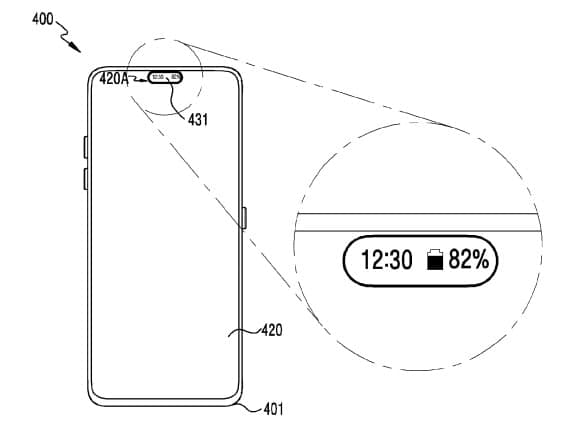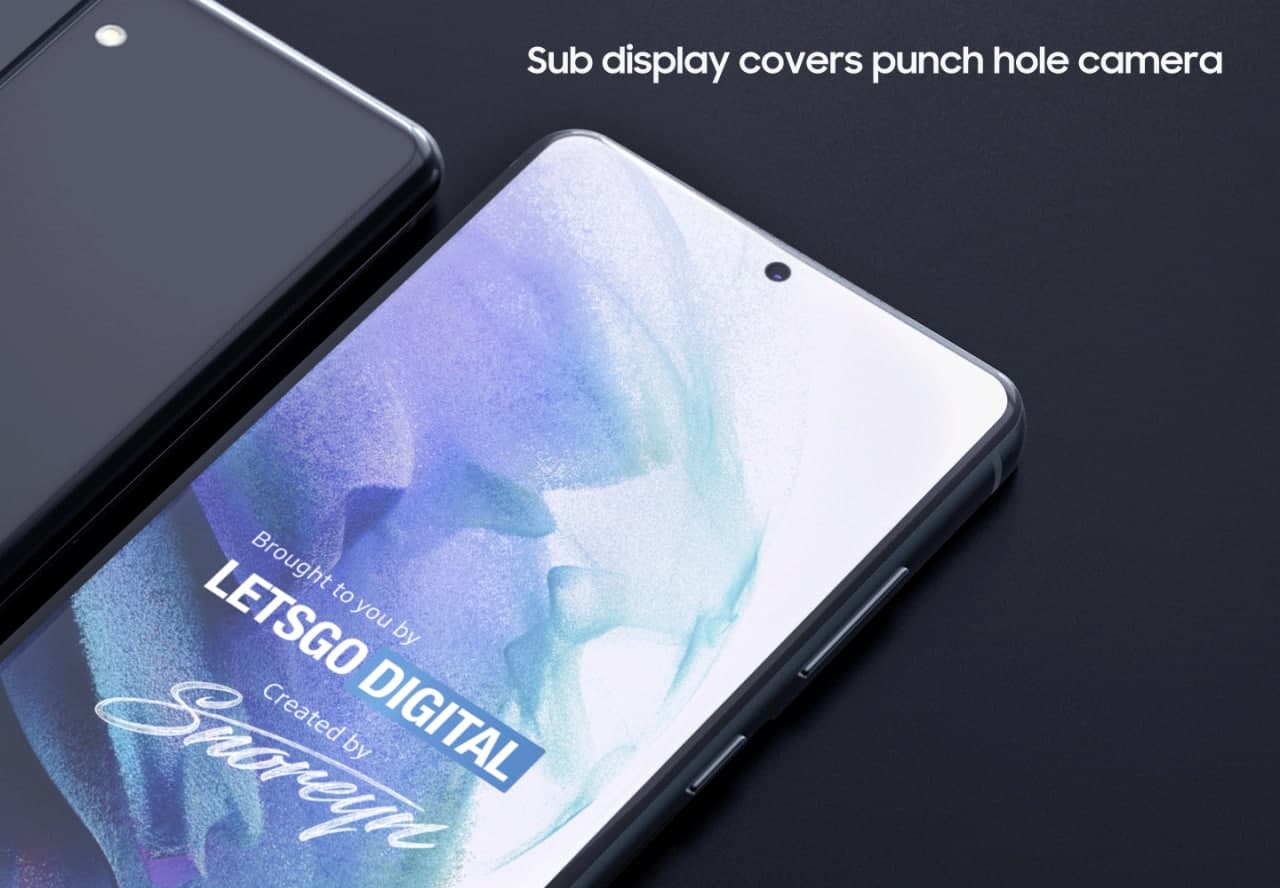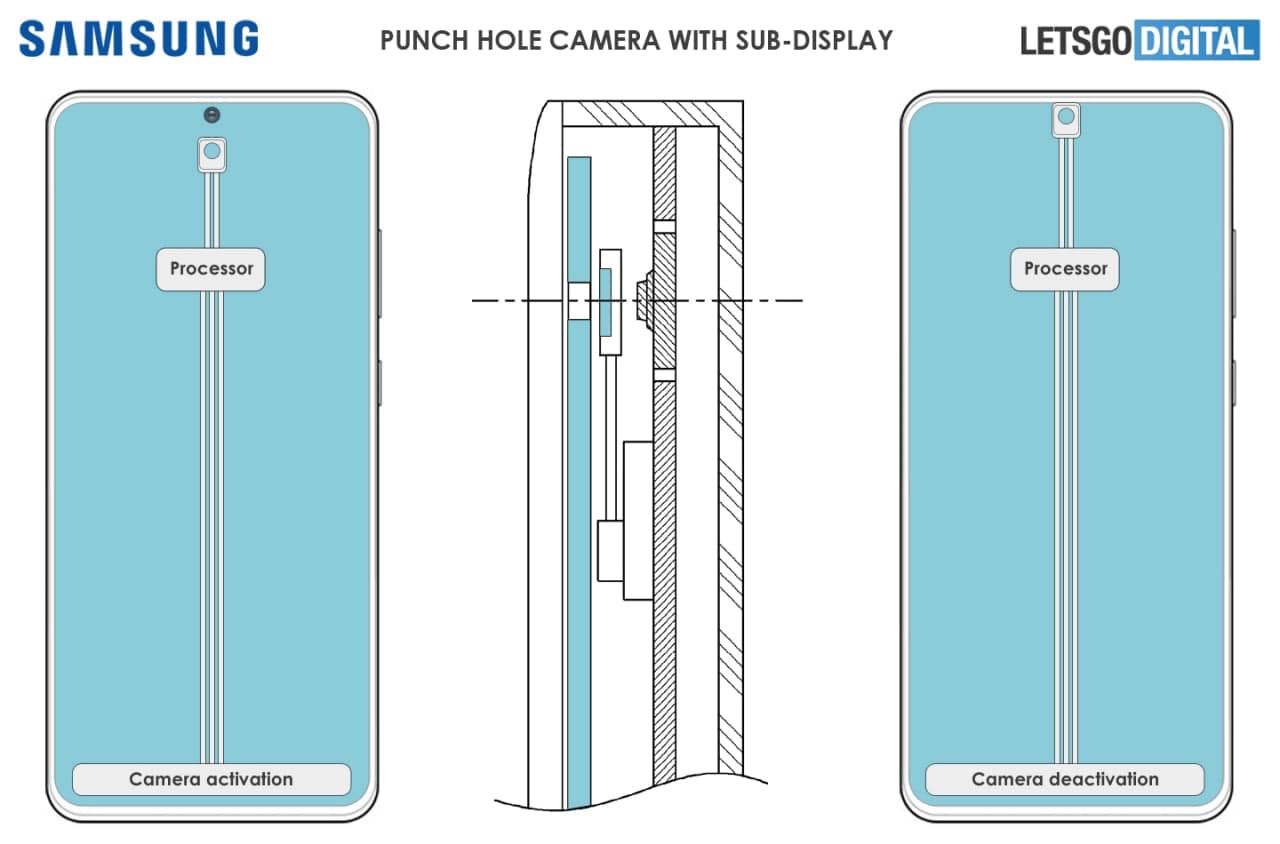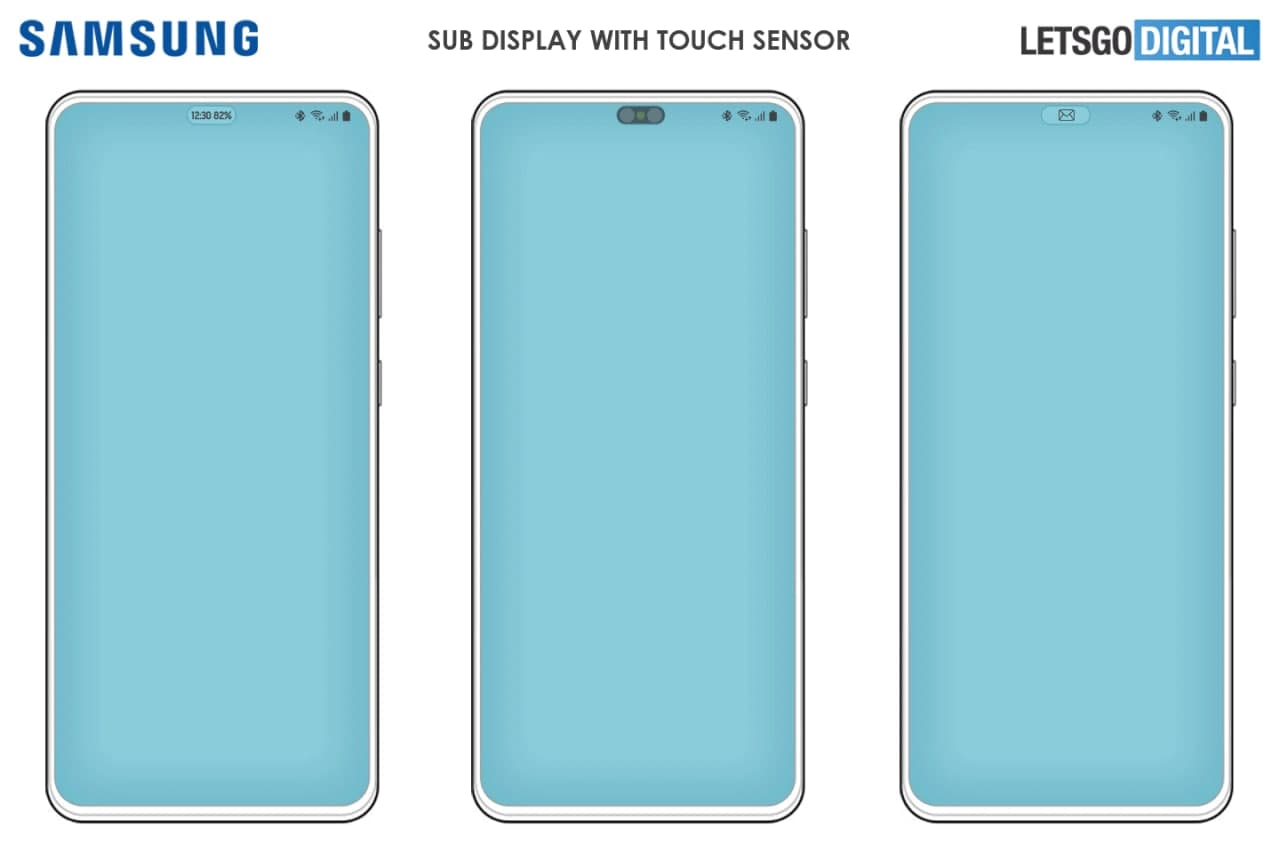According to the latest news (Via SammyFans), Samsung Electronics applied to WIPO (World Intellectual Property Office) for a patent titled “Electronic Equipment Including Sub-Displays and Operating Methods”, which described a mobile phone whose front camera part can be hidden by switching the screen layering. The patent was approved and publicized on December 24.
The document also pointed out that the screen of this model also supports the use of the Samsung S Pen for operation. In addition to the Samsung Note series, the Galaxy S21 Ultra that will be released next month will also support the Samsung S Pen.

For the convenience of readers’ understanding, LetsGoDigital has produced some renderings. It can be seen from the rendering that this is a nearly full-screen Samsung smartphone with narrow bezels and arc boundaries. When the user does not need to take a picture, the camera and LED flash are hidden; when the user calls the front lens, it can be automatically switched to a high-quality lens.

The top middle of the screen of the device is a transparent area. The secondary display (sub-display) layer is located under the transparent area. This part of the module integrates a dual-camera lens (iris sensor and ordinary lens) and LED flash.

Samsung plans to move the secondary display layer and transparent area through the built-in driver module, which can move from top to bottom and from left to right.
If the sub-display part is located below the transparent area (the screen includes the upper glass, the middle-level display part, and the camera below), the top of the phone can display content normally, such as the display time and battery status and once the sub-display does not Below the transparent area (the screen has only a layer of transparent glass and the camera), the front lens system will appear on the top of the phone.
Therefore, Samsung can simply expose the iris sensor or lens, or show it all, or hide it all.

In addition to the automatic mode, users can also manually open and close this part of the screen. There is a small slider next to the power button to control the movement of the sub-display. In addition, the sub-display part is also equipped with a touch sensor, and users can also directly move with their fingers (tap twice or slide).




